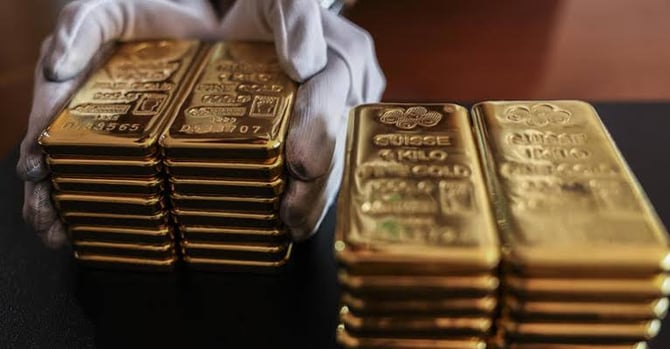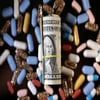Gold Could Be Heading for a Setback After Market Highs

Gold prices have surged to new heights, with spot gold reaching $2,342 per ounce and peaking at $2,353, driven by strong U.S. economic data and ongoing geopolitical tensions. This continued uptrend comes as the precious metal is increasingly seen as a hedge against recession amid conflicts like those in Ukraine and Gaza.
However, some experts express caution regarding the sustainability of this rally, highlighting a "catch-up effect" due to gold's previous underperformance relative to global equity markets. Additionally, increased central bank purchases of gold, particularly by Asian banks, are a factor in the current price surge.
Despite gold being traditionally viewed as a safe asset during financial uncertainty, its recent rally is happening amidst high-interest rates and a strong U.S. dollar.
There is a bearish outlook for gold, owing to factors such as the U.S. dollar's strength, rising bond yields, and uncertainty over the Federal Reserve's interest rate cuts, which could limit gold's upside potential.
What Does This Mean for Me?
On a different note, silver prices are gaining attention, potentially offering more excitement than gold's rally, which has suspiciously broken away from its traditional correlation to real interest rates and to the U.S. dollar.
Silver, despite lagging behind its historical high of $50 per ounce, is starting to see a notable increase, suggesting a diversifying interest in precious metals beyond gold. Gold and silver prices have traditionally shown a strong positive correlation, although silver has sometimes been described as the “poorer cousin” of gold.
More News
.webp)
Japan’s Rate Shift Is Rippling Through Global Bond Markets
5 days ago

China’s Growth Engine Stalls as Consumers and Investors Pull Back
1 week ago

Egypt’s Recovery Gains Traction as Household Pressure Lingers
2 weeks ago

OECD Warns AI and Tariffs Will Test the Global Economy
3 weeks ago

Zero Tariffs, Higher Drug Bills as US and UK Reset Pharma Trade
3 weeks ago

Catastrophe Bonds Go Global as Climate Risk Meets Yield Hunting
3 weeks ago
.webp)
Canada Shields Steel and Lumber Industries From Tariffs
3 weeks ago

Trump Drops Selected Tariffs in Response to Inflation Pressures
4 weeks ago